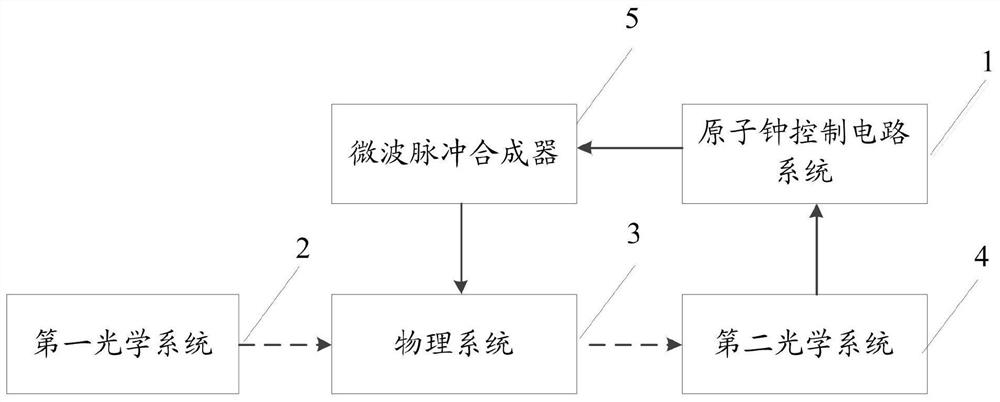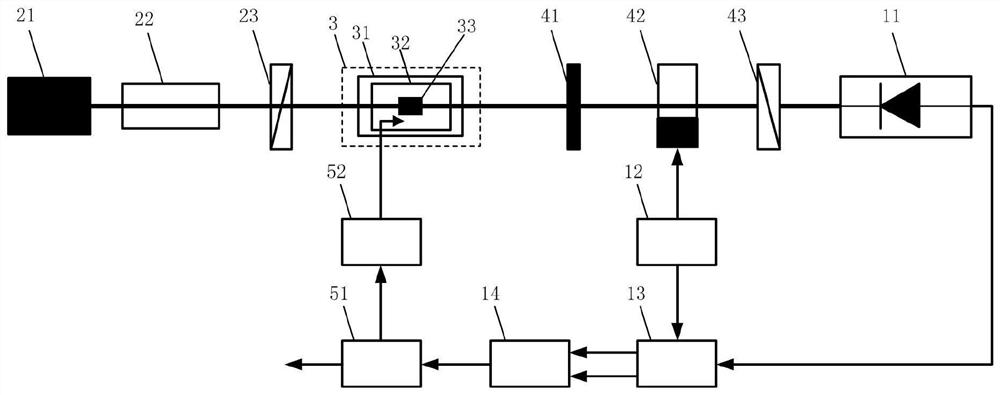An Atomic Clock Frequency Discrimination Signal Detection System
A signal detection and atomic clock technology, applied in the field of optical detection, can solve the problems of limited rubidium bubble length, low signal-to-noise ratio, low absolute intensity of light intensity signal, etc., to improve frequency stability, improve signal-to-noise ratio, and eliminate mechanical jitter. Effect
- Summary
- Abstract
- Description
- Claims
- Application Information
AI Technical Summary
Problems solved by technology
Method used
Image
Examples
Embodiment approach
[0050] As an implementation, the first optical system 2 of the present invention includes:
[0051] Laser 21, used to generate 795nm laser;
[0052] The isolator 22 is arranged on the output optical path of the laser 21, and is used for the one-way passage of the laser, preventing the laser from feeding into the laser 21;
[0053] The polarizer 23 is arranged on the output optical path of the isolator 22, and is used for converting the isolated laser light into linearly polarized light.
[0054] As an embodiment, the second optical system 4 of the present invention includes:
[0055] A quarter-wave plate 41 is arranged on the output optical path of the physical system 37, and the optical axis direction of the quarter-wave plate 41 is the same as that of the polarizer 23 for linearly polarizing The light becomes elliptically polarized light;
[0056] The photoelastic modulator 42 is arranged on the output optical path of the quarter-wave plate 41, the angle between the optic...
PUM
 Login to View More
Login to View More Abstract
Description
Claims
Application Information
 Login to View More
Login to View More - R&D
- Intellectual Property
- Life Sciences
- Materials
- Tech Scout
- Unparalleled Data Quality
- Higher Quality Content
- 60% Fewer Hallucinations
Browse by: Latest US Patents, China's latest patents, Technical Efficacy Thesaurus, Application Domain, Technology Topic, Popular Technical Reports.
© 2025 PatSnap. All rights reserved.Legal|Privacy policy|Modern Slavery Act Transparency Statement|Sitemap|About US| Contact US: help@patsnap.com



